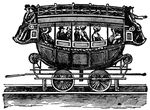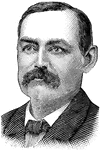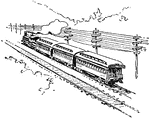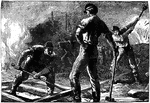Clipart tagged: ‘Railroad’

Camp Dennison
"Camp Dennison, sixteen miles above Cincinnati, on the banks of the Miami River, General Cox commanding-…
Gauntlet Track
"In railway engineering, the running together of parallel tracks into the space occupied by one, by…
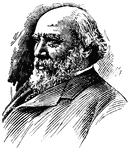
James Jerome Hill
(1838-1916) Railroad executive and financier that was known as "Hill the empire builder" because of…

Power House
A diagram of a cross-section of a power station at the South Side Elevated Railway Company in Chicago.…
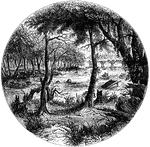
James River
"Scene on the James River, at Richmond. This view is from a long shaded island extending up the river…
American Locomotive
"Three locomotives were imported from England in 1829, and the first trial in America took place Aug.…

Early Locomotive
"Three locomotives were imported from England in 1829, and the first trial in America took place Aug.…

Passenger Depot
Passenger Depot of the Chicago and North-Western Railroad, corner of Wells and Kinzie streets.

Passenger Train
"The first passenger locomotive built in the United States. A year after the Enterprise sailed for India,…
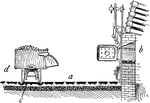
Industrial Railway
"Industrial Railway. a, cast-iron plates bedded in concrete for boiler-room floor; b, section of boiler;…

Railroad Semaphore
"Railway Semaphore. a, lever, which operates both b, blade, and c, lantern." -Whitney, 1911

Centrifugal Snow Plow
"An implement for clearing away snow from roads, railways, etc. a, caboose; b, cab; c, tender; d, show,…

Spike Extractor
"An apparatus for extracting spikes, as from a rail. a, rail; b, spike to be extracted; c, fulcrum-piece…
Dock Spike
"A large nail or pin, generally of iron. The larger forms of spikes, particularly railroad spikes, are…

Railway Spikes
"A large nail or pin, generally of iron. The larger forms of spikes, particularly railroad spikes, are…
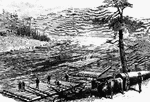
Susquehanna River
Making up rafts on the Susquehanna River. A scene on the line of the Erie Railroad.

Train
A train is a connected series of vehicles that move along a track (permanent way) to transport freight…

Union Pacific
"The big loop on the Georgetown branch of the Union Pacific, Colorado."—E. Benjamin Andrews 1895
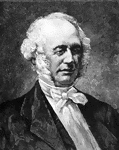
Cornelius Vanderbilt
"Cornelius Vanderbilt was involved in the New York Central Station."—E. Benjamin Andrews 1895

War in Virginia
"The war in Virginia--railroad bridge over the Rappahannock, at Rappahannock Station."— Frank Leslie,…

Railroad Up Mount Washington
"The highest of the White Mountains is Mount Washington. We can go in an ordinary train to the foot…

